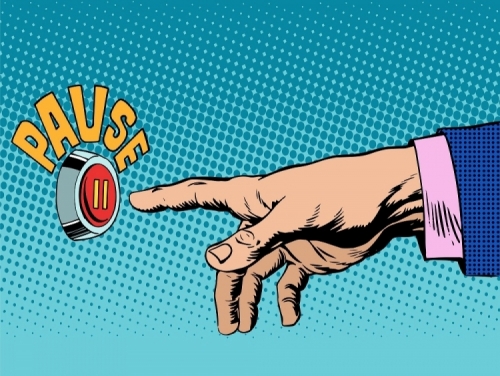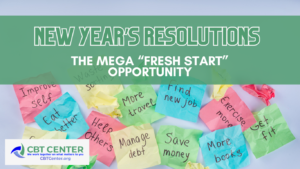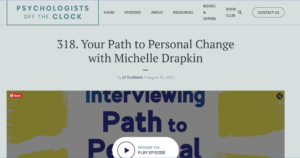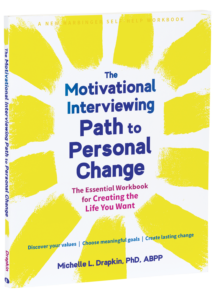
Mindfulness sounds easy on the surface. In reality, it can be tough to apply – it’s simple, but not easy. Our emotions can get the best of us. Practicing mindfulness is like filling up the car at the gas pump. You don’t use the gas while at the pump; you use it later when you are driving to your destination. We practice mindfulness, so that it comes more naturally in moments when it would be helpful to be more aware of our experiences and choose our responses.
The difference is that the car automatically uses the gas. For us humans, it’s not always as easy to turn on our awareness. Our nervous systems have evolved to operate on autopilot and, personally, if I am about to step off the curb and a bus is flying by, I want my nervous system to react immediately and help me jump to safety without thinking. I don’t want to pause and mindfully consider whether or not I should move!
However, when I’m about to scream “GO THE (bleep) TO BED!!!!,” flip someone off in traffic or say something hurtful to my husband, I DO want to pause and decide if that reaction is in line with my values. So how do we become more skilled at effectively using mindfulness in the heat of the moment in order to help us regulate our emotions and choose our behaviors?
Here’s two basic steps to start:
Step 1: Know your unique cues.
Tension in your shoulders? Holding your breath? Gritting your teeth? We all have our individual signs that our emotions are about to hijack us. If you’re familiar with your unique cues, you can more readily recognize them when they show up. And, in the spirit of mindful awareness, this requires paying attention to what’s happening inside.
Let’s experiment together – See if you can drop the criticism and judgment of yourself and get very curious. Pretend you are switching from an emotion judge (“this is a good or bad feeling,” “I should or should not feel this way”) to an emotion detective (“what are the sensations in my body?” “Where in my body do I feel this?” “What may this feeling be trying to tell me?”). Channel your inner Sherlock Holmes or Harriet the Spy and let your emotions be information that help you figure out what is important to you and what you need right now.
To help tune in, think back to the last time you were swept away by your emotions or did something you later regretted (sent that harsh text, ate the cookie, hit Buy It Now on Amazon, threw out all the toys while rage cleaning because you’re sick of clutter, screamed insults and grounded your teenager for eternity because they failed a test, slammed the door and walked away from your partner) What normally happens when you have strong emotions?
What is happening in your body? Do you get hot? Are your shoulders up by your ears? Is your heart pounding? Is your skin crawling? Do you feel like you are going to vomit? Are tears stinging your eyes? Do you have a headache? A lump in your throat?
What does your self-talk sound like? “I hate my life.” “This is hopeless.” “Why won’t you just listen to me?” “No one gets me.” “I’m too tired to deal with this.” “Nothing will ever change.” “I am right and they are wrong.” What chatter is happening in your head?
What do you feel like doing? Escaping in some way? Numbing out? Disappearing? Yelling? Lecturing? Analyzing? Judging? Shutting down? Isolating? Punishing yourself? Punishing others? These are all human responses to feeling unwanted sensations and emotions. Again, try to suspend judgment and tap into curiosity.
When we know our telltale signs that we are on our way to becoming emotionally dysregulated and acting on our emotions, we are better able to notice when they show up in the moment, pause and intentionally do something different.
Step 2: Notice your cues ASAP and PAUSE!
Noticing is a superpower when it comes to doing something differently! Being aware is absolutely critical if we want to choose our behaviors rather than reacting impulsively. For me, if I notice my jaw is clenched, I’m thinking “This is so unfair,” and I want to get in the car and drive far away, I know it’s time to pause. Often, because I am not paying close attention, it takes a bit to catch my cues. With practice, I’ve gotten better at tuning into them faster and you will too. Whenever I do notice, I tell myself to pause. I visualize a tv remote and press the button. I flatten my feet into the ground or clasp my hands tightly together or put a hand to my chest and take a few deep breaths to try to bring my emotional temperature down and get present to what is actually happening, not what my mind is telling me is happening.
These first two steps are a lot harder than they may seem AND are not impossible! It takes practice and the willingness to try again and again. If you’re a parent, and maybe even if you’re not, is your mind saying there’s no way you have time for mindfulness? If so, check out this blog where we address how to be mindful even when it feels impossible! Also, stay tuned for an upcoming blog to find out more about the next steps after the pause!
Be well,
Dr. Christina Contrastano






